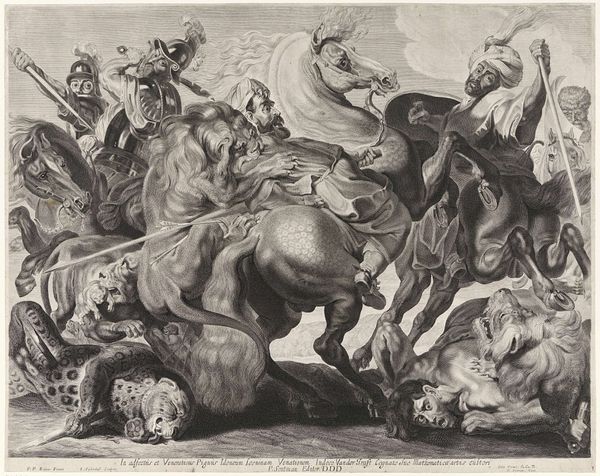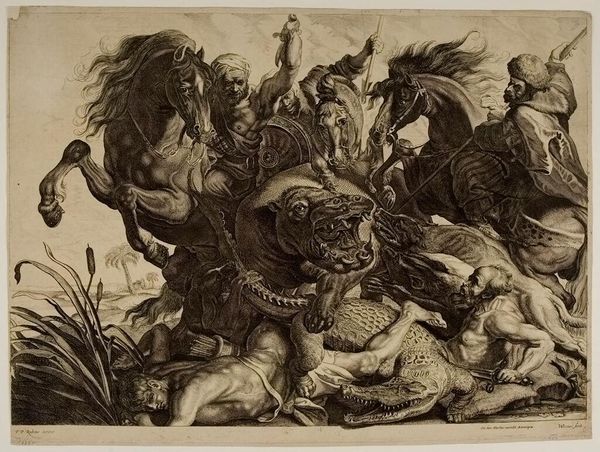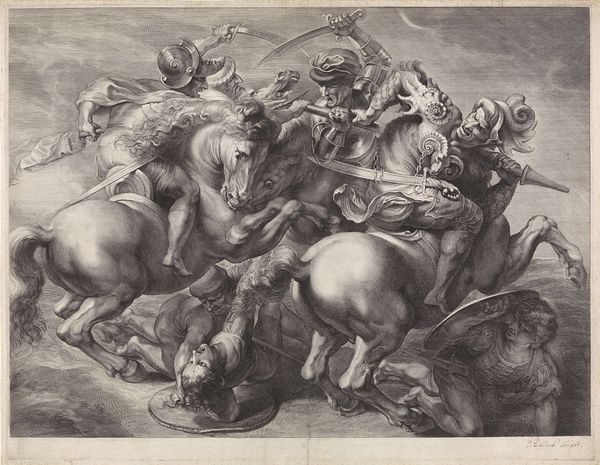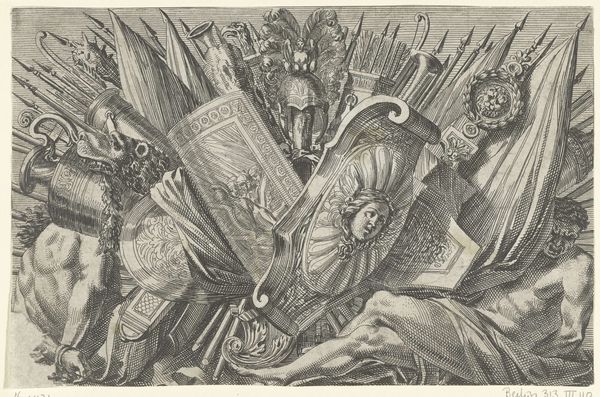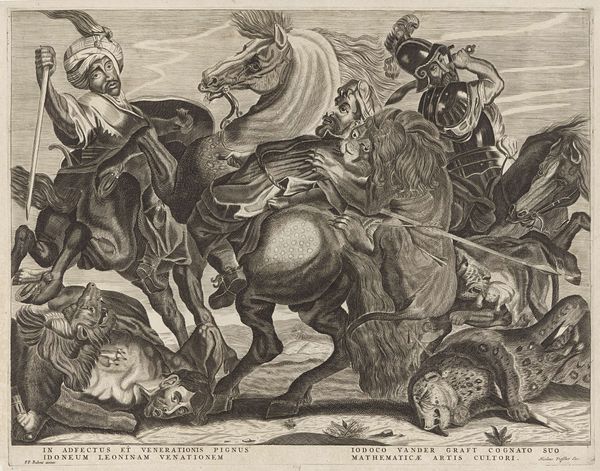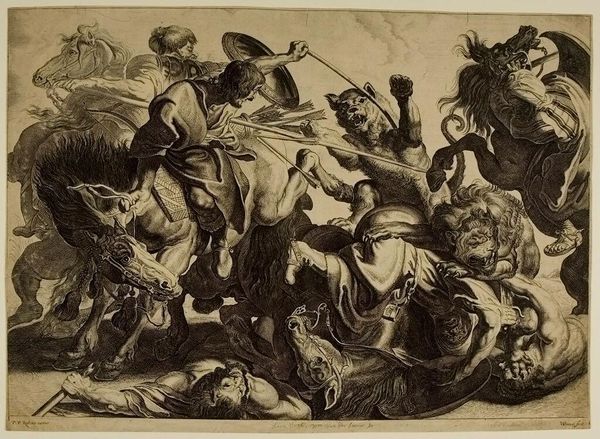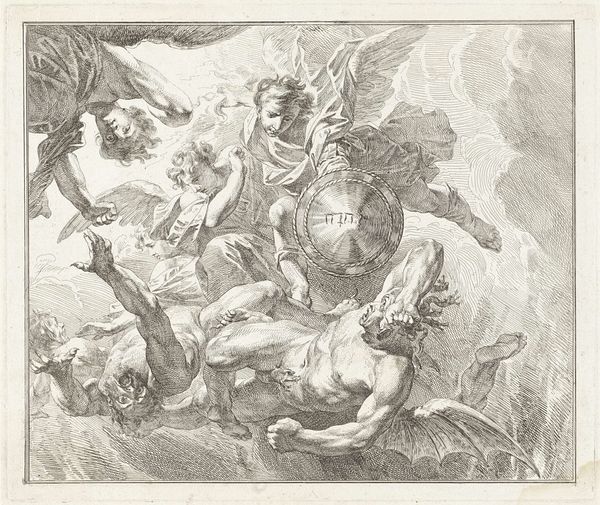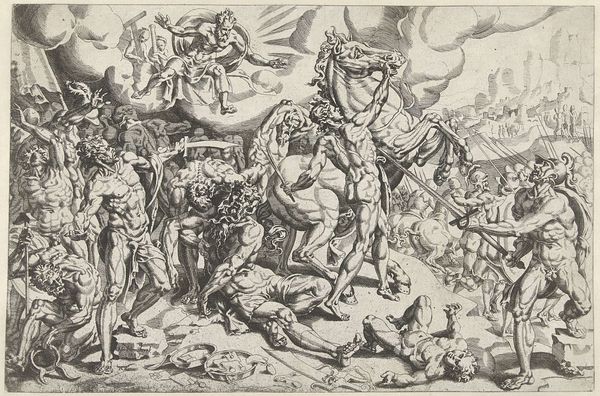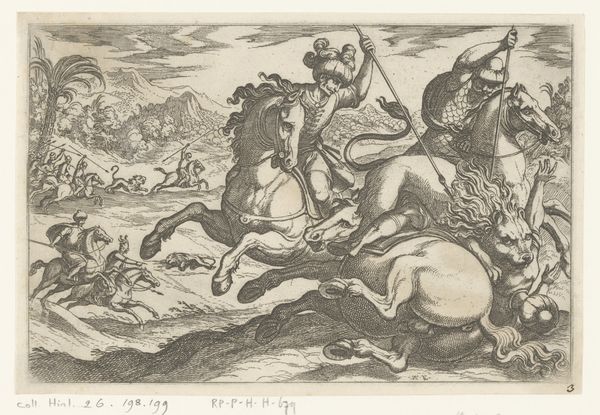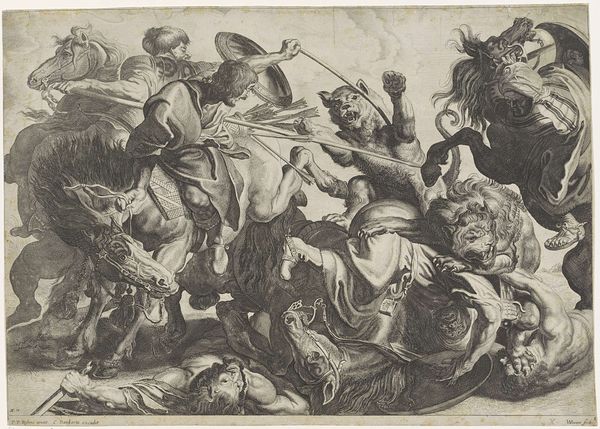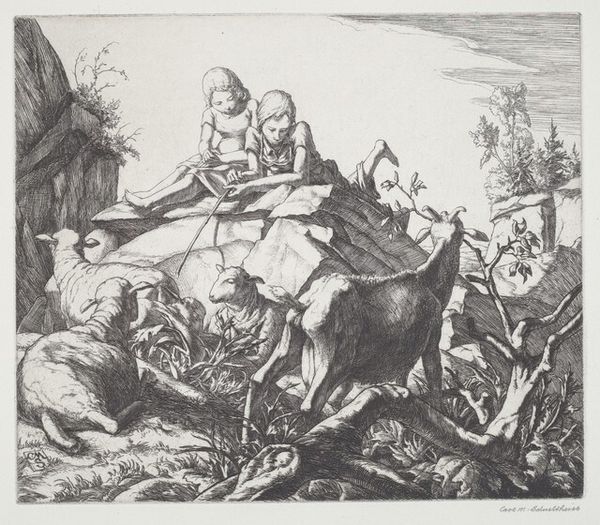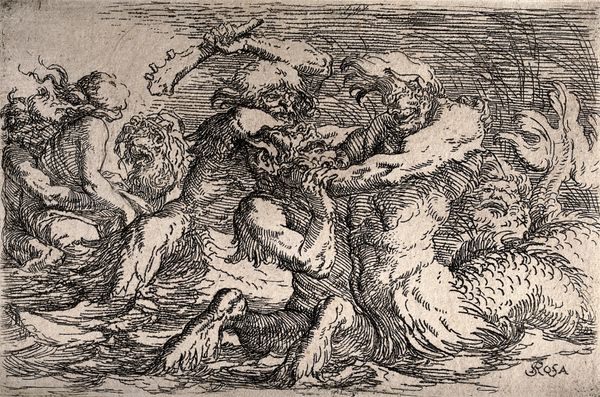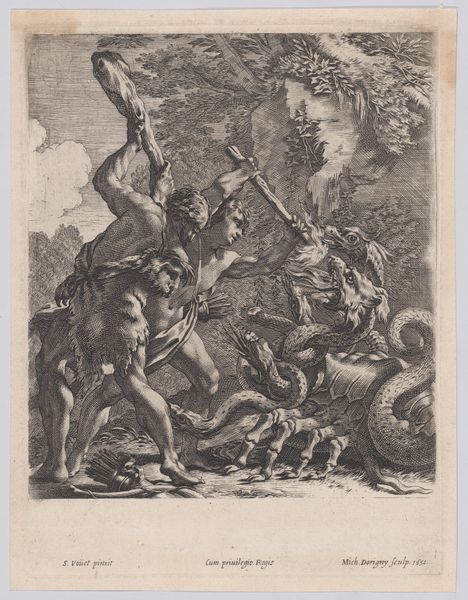
print, engraving
#
action-painting
#
baroque
# print
#
landscape
#
figuration
#
history-painting
#
engraving
Dimensions: height 470 mm, width 652 mm
Copyright: Rijks Museum: Open Domain
Editor: This engraving, "Jacht op nijlpaard en krokodil," or "Hunt for Hippopotamus and Crocodile," created by Willem van der Leeuw sometime between 1613 and 1665, is incredibly dynamic. The chaotic scene of hunters battling these powerful animals just leaps off the page. How might we interpret the cultural significance of this work? Curator: It's essential to consider the context. Prints like these played a crucial role in disseminating imagery and ideas in the 17th century. The "exotic" hunt, a clash between Europeans or those coded as "other," and wild animals, served as a demonstration of dominance and control over the natural world. How does the artist portray that dominance visually? Editor: I notice the hunters are actively attacking, while the animals are largely on the defensive, overwhelmed by numbers. Is there something about the clothing of the hunters that reinforces this dominance? Curator: Exactly. Note the details: some hunters are in elaborate, almost theatrical clothing, distinct from the somewhat classical, less adorned figures wrestling the crocodile below. Consider the role of printmaking during this era; this wasn't simply an artistic expression, but a form of visual rhetoric contributing to an emerging European identity often constructed in opposition to the 'exotic other.' Did prints like these help to form public opinion? Editor: I imagine they did, shaping perceptions of foreign lands and peoples and of man’s place in the natural order. The scene is exciting and violent but clearly promotes a sense of European power. Curator: Precisely. By examining the print within its historical and cultural context, we see how art served to shape, reinforce, and disseminate ideology. Editor: I hadn't fully appreciated the role of prints in shaping those early perspectives. I'll certainly look at similar works with a different lens now.
Comments
No comments
Be the first to comment and join the conversation on the ultimate creative platform.
